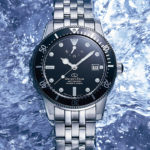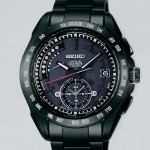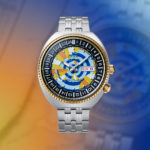Viridian Starfall: A New Glow for Orient Star
The Perseid-inspired M34 might be Japan's best-kept secret.
Among Japan’s best-kept secrets, Orient Star occupies an intriguing middle ground between tradition and technology. Its latest creation, the M34 F8 Date Green, captures that duality perfectly by combining an old-school movement with state-of-the-art dial and escapement components drawn from the vast capabilities of its parent company, Seiko Epson. The result is a watch that feels distinctly Japanese in both spirit and execution.
The M34’s new green dial is embossed with a hand-engraved stamp and coated with an optical multi-layer film that creates shifting hues without a trace of pigment — an effect more often associated with much costlier watches. Beneath its shimmering surface lies Orient Star’s enduring in-house F8 movement, which continues a lineage that dates back to 1971. 
Initial thoughts
The dial of the M34 immediately distinguishes it within its segment. Its engraved texture, embossed from a hand-engraved die, gives the surface a natural radiance, while the iridescent green tone — created through a PVD-applied optical multi-layer film — shifts fluidly under changing light. It’s a distinctly upmarket look that signals the depth of the Epson manufacturing ecosystem behind it.
The case reflects that same industrial prowess, made entirely in-house within Seiko Epson’s facilities, using 316L stainless steel finished with Sallaz (more commonly known as ‘Zaratsu’) polishing to achieve distortion-free mirrored bevels. The 40 mm size and H-link bracelet give it a natural ‘go anywhere, do anything’ sensibility.
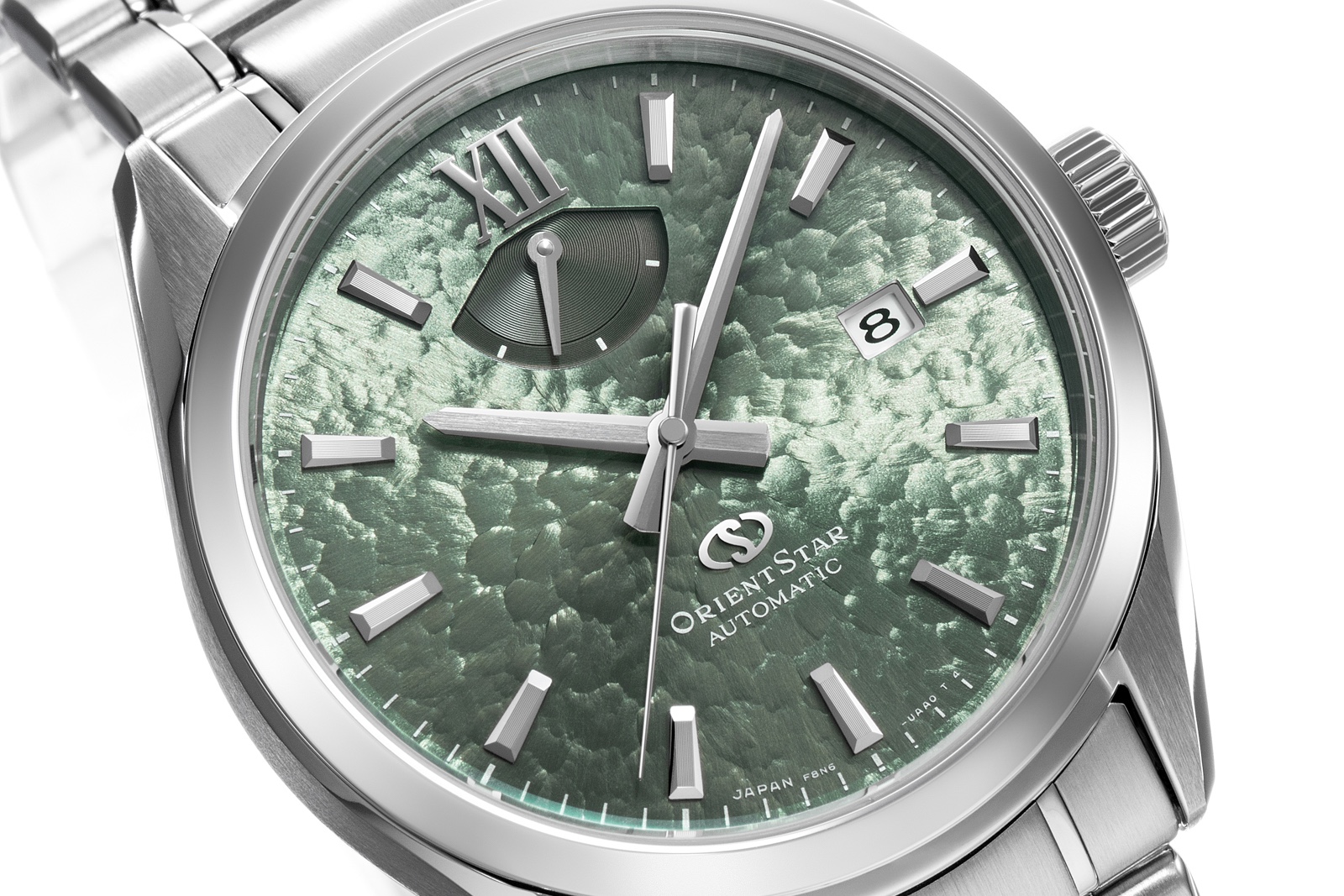
The M34 is powered by the Calibre F8, a direct descendant of Orient Star’s long-running 46-series movement first introduced in 1971. The 3 Hz calibre delivers a 60-hour power reserve and introduces a patented silicon escape wheel that grips the pinion slit with flexible blades, eliminating adhesive and improving durability.
While not the most advanced automatic movement produced in Japan, it’s a thoughtful evolution of a proven architecture. It’s a robust, serviceable calibre refined through five decades of incremental improvement.
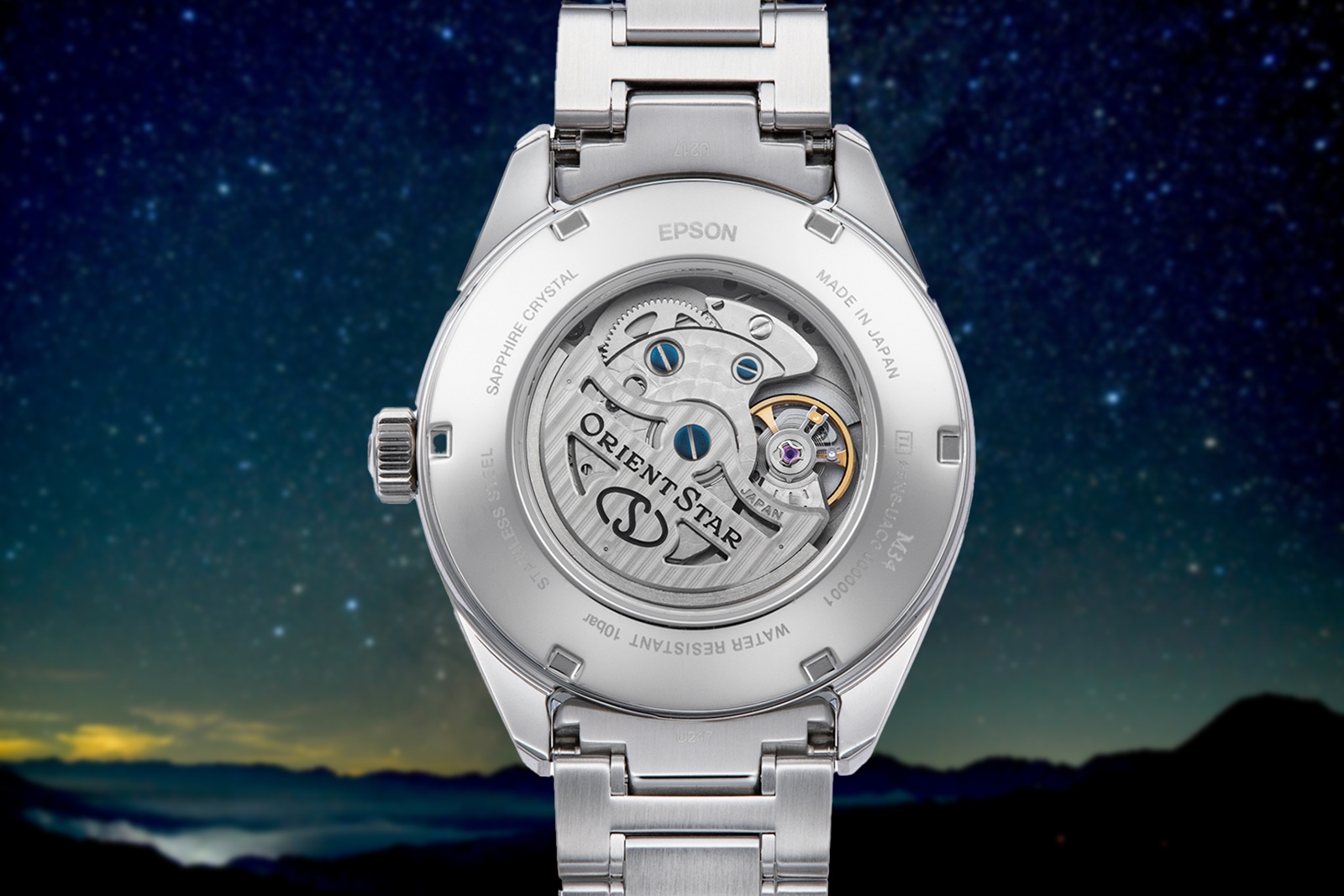
At US$2,900, the M34 offers an uncommon value proposition thanks to its in-house movement, silicon escape wheel, expensively crafted dial with its optical multi-layer coating, and a Sallaz-polished case. It’s the kind of substance usually associated with watches costing far more; a comparable mechanical Grand Seiko on a bracelet starts at roughly twice the price.
Understanding Orient Star
To understand Orient Star, it’s illustrative to look at the trajectory of Grand Seiko over the past two decades. What once felt like a secret handshake among insiders has quickly become a mainstream luxury brand. The success has been well earned, but it has also come at a cost. As prices have risen and distribution has expanded, some of Grand Seiko’s early allure as a connoisseur’s secret has inevitably faded.
Yet there is another Japanese marque that offers the same sense of discovery that once defined Grand Seiko. Orient Star, the elevated counterpart to Orient, pursues a comparable philosophy — in-house production, thoughtful design, and competitive pricing.

Interestingly, Orient Star’s history predates that of Grand Seiko, having launched in 1951, nine years before the first Grand Seiko models. More recently, the Orient Star has occasionally anticipated its better-known counterpart, introducing a collection of mechanical watches with power-reserve indicators in 1996 — two years before Grand Seiko reintroduced its own mechanical calibres.
Orient Star has since become part of Seiko Epson, the group responsible for making all spring drive and high-accuracy quartz models for Grand Seiko and Credor. This work takes place at the Shinshu Watch Studio in Nagano Prefecture. This also the location of the Shinshu Dial Studio, which makes dials for both Grand Seiko and Orient Star. This shared ecosystem allows Orient Star to leverage the vast industrial expertise of Epson, which patented the unusual silicon escape wheel found in the M34’s F8N64 movement.
![]()
A multi-layered dial
The dial of the M34 is where Orient Star’s connection to Epson truly pays dividends. Two elements stand out in particular: its engraved base and its optical coating. Fittingly, the pattern is inspired by the Perseid meteor shower, echoing the brand’s celestial theme.
The dial begins as a brass disc stamped using a hand-engraved die. A craftsman employs a rotating engraving tool to cut the pattern directly into the steel mould, which is then used to imprint the intricate texture onto each dial blank. The use of a hand-engraved die results in a pattern with sharper relief and more natural variation than a typical machine-cut texture.

Its subtle, iridescent green tone, however, comes from a far more modern process that’s more science than art. Rather than applying any pigment or lacquer, the colour is created through a Physical Vapour Deposition (PVD) technique that lays down an optical multi-layer film — a stack of ultra-thin coatings that refract and interfere with light to produce a specific visible colour.
The resulting hue shifts gently under changing angles, giving the dial a natural, almost liquid appearance similar to mother-of-pearl. Because the film itself is microscopically thin, it preserves every ridge and groove of the engraved surface below, amplifying the texture.

This technology is often applied to high-performance optical lenses where precise control of light transmission and reflection is critical. But the use of such coatings in watchmaking is quite rare; only a few brands, such as Audemars Piguet and Chronoswiss, have adopted comparable multi-layer optical coatings — and at far higher price points. That Orient Star can offer such material sophistication at this price point underscores the advantages of its parent company’s advanced manufacturing ecosystem.
The hands and hour markers demonstrate the same attention to detail that defines the rest of the watch. In place of lume, Orient Star relies on razor-sharp geometry to ensure legibility; the facets on the markers and hands catch and redirect even the faintest light.

Stellar steelwork
It’s hard to talk about Japanese watchmaking without eventually mentioning ‘Zaratsu’ polishing, which takes its name from the Sallaz polishing machine used to create distortion-free polished surfaces. The term usually comes up in the context of Grand Seiko, but Orient Star employs the very same method for the M34, which explains the razor-sharp bevels on the 316L stainless steel case and bracelet.
The finishing extends seamlessly into the H-link bracelet, which offers a short pitch to improve articulation and fit; shorter links mean finer incremental adjustment when adding or removing links.

The case is appropriately sized for a ‘go anywhere, do anything’ type of watch, measuring 40 mm and 12.9 mm thick. At 47.3 mm lug-to-lug, it should suit most wrists comfortably, despite its substantial presence. Unfortunately, the bracelet lacks any kind of tool-free micro-adjustmentment, but the push-button clasp does feature three adjustment positions, improving the chances of finding a ‘set it and forget it’ sweet spot.
As with the movement, the case is produced entirely in-house within the Seiko Epson group, which helps ensure consistency of tolerances and finishing, underscoring Orient Star’s integrated approach to watchmaking.
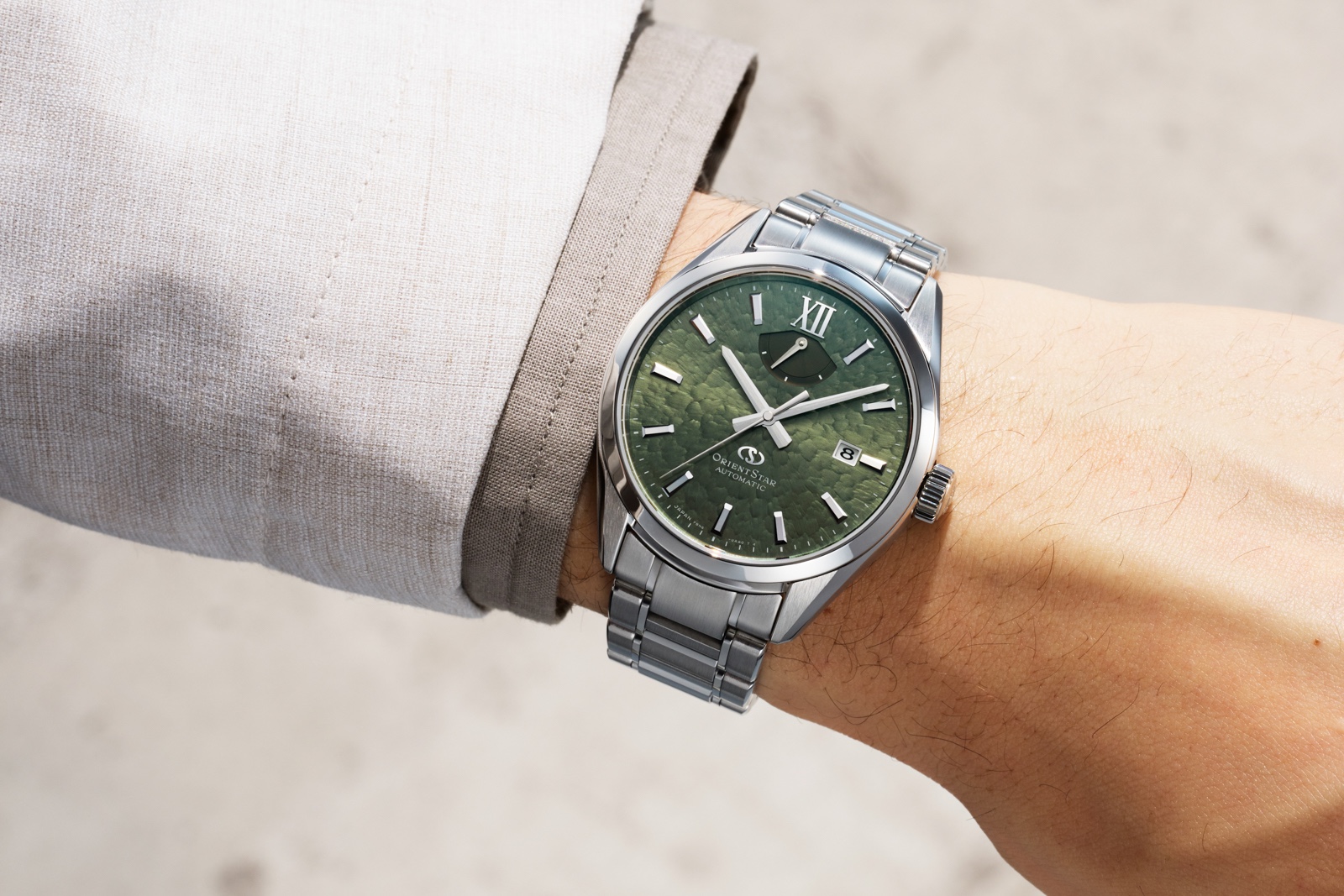
A time capsule of Japanese watchmaking
Some collectors, especially those who favour vintage watches, bemoan modern products, complaining, ‘they don’t make them like they used to.’ In Orient Star’s case, they actually still do. The cal. F8 that powers the M34 traces its lineage directly to the brand’s famed 46-series movement, first introduced in 1971, that would later become the backbone of the brand’s mechanical production.
While many brands have abandoned long-standing designs in favour of modern platforms, Orient Star has spent half a century refining a single architecture. The modern F8 represents the pinnacle of that evolution, ticking at 3 Hz and offering a 60-hour power reserve, about ten hours more than its predecessor thanks in part to a newly developed silicon escape wheel.

The escape wheel itself is lighter and possesses a naturally low coefficient of friction, a property inherent to silicon. Though still lubricated, its performance is less dependent on the even distribution and conductivity of lubricant than a traditional steel lever system. The result is greater long-term stability and reduced energy loss across the gear train.
Unlike the conventional Swiss approach, where the pinion is fixed to the escape wheel using adhesive, Seiko Epson’s patented design employs spring-loaded blades that flex around the pinion slit, locking into place without glue. This eliminates a common source of breakage during assembly.
This innovation was made possible through the use of MEMS (Micro-Electro-Mechanical Systems) technology, the same ultra-precise micro-fabrication techniques Epson applies to its printheads. Working at micron-level tolerances, engineers designed flexible silicon arms to give the components the resilience needed to grip the pinion securely without deformation. The result is a silicon escape wheel that is both durable and service-friendly; a rare combination.
![]()
Of course, the F8 retains the fan-shaped power reserve display at 12 o’clock that has become something of an Orient Star signature since 1996. Some question the utility of such a feature on an automatic watch, but for collectors who rotate through their watches, or for people who don’t wear their watches all day, a power reserve indicator is a useful and welcome feature.
While the F8 represents the latest in a long line of refinements, its spirit remains unchanged. Like the original 46-series, it is a straightforward, mechanically honest calibre designed for longevity rather than spectacle. Few manufactures have maintained such unbroken continuity between their past and present. In other words, Orient Star still makes them like they used to.
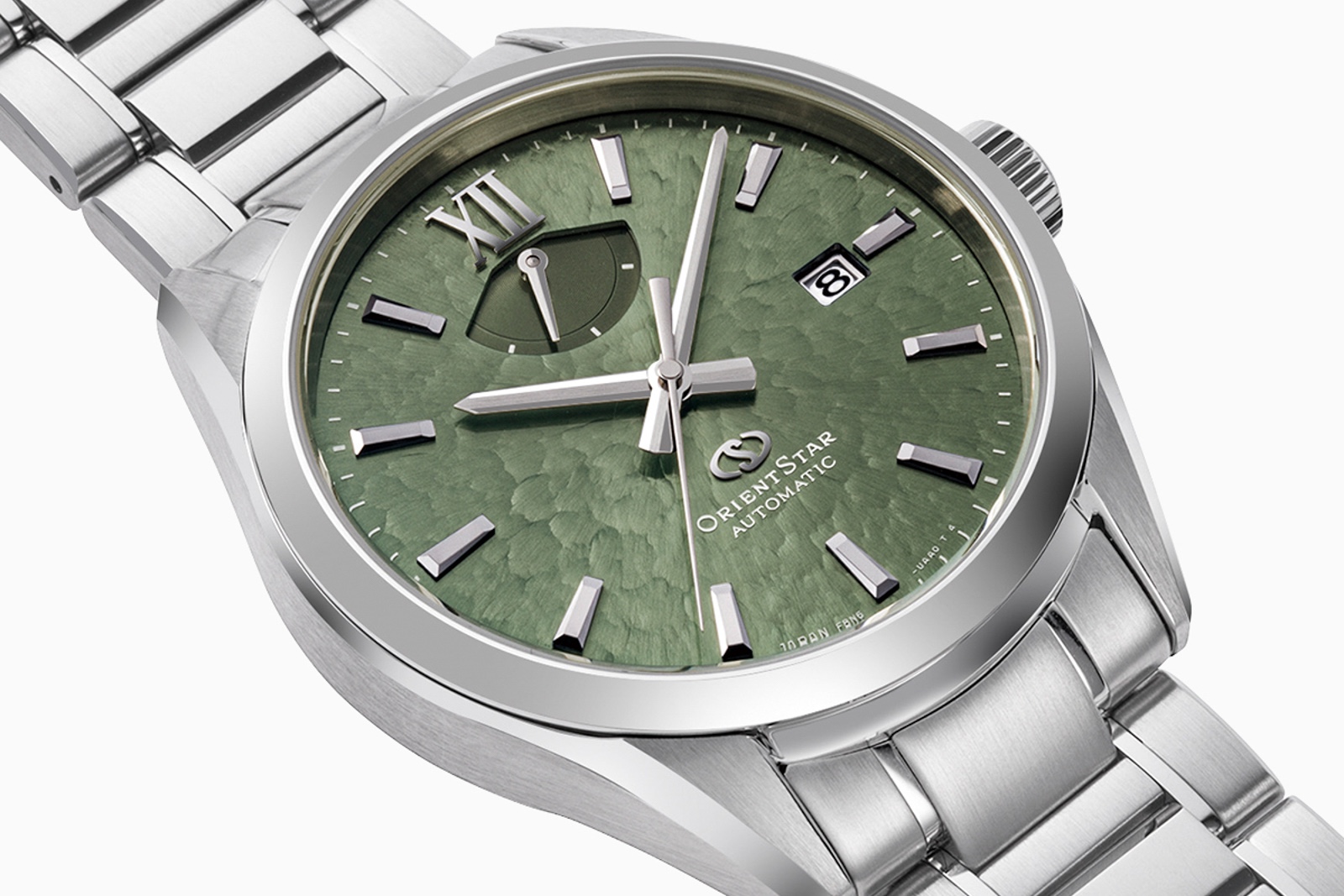
Key Facts and Price
Orient Star M34 F8 Date Green
Ref. RE-BX0006E
Diameter: 40 mm
Height: 12.9 mm
Material: Stainless steel
Crystal: Sapphire
Water resistance: 100 m
Movement: F8N64
Functions: Hours, minutes, seconds, date, and power reserve indicator
Winding: Automatic
Frequency: 21,600 beats per hour (3 Hz)
Power reserve: 60 hours
Strap: Stainless steel bracelet with folding clasp
Availability: At Orient Star retailers
Price: US$2,900 excluding taxes
For more, visit Orient-watch.com.
This was brought to you in partnership with Orient Star.
Back to top.

